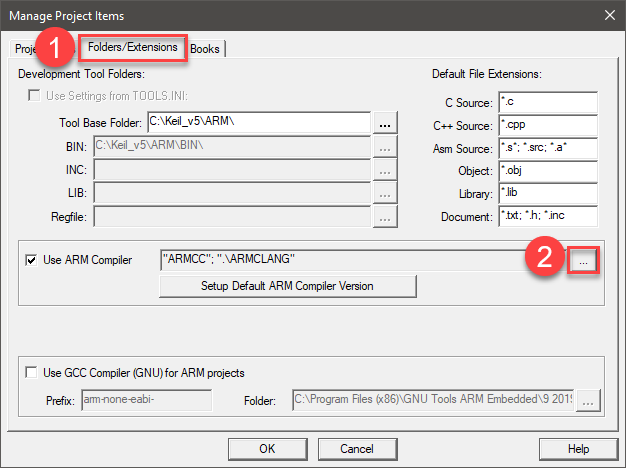

- Keil mdk arm for learning install#
- Keil mdk arm for learning software#
- Keil mdk arm for learning code#
- Keil mdk arm for learning series#
Looking through the \ARM\Boards directory, there aren’t any boards from Olimex that are supported. Instructs the user to copy the source files from the RTX_HID sub-directory under \ARM\Boards\…\…\RL\USB. I want to gain some experience with USB firmware in this environment, so I’m going to make the board appear as a simple HID device. To make things easy, I’m going to create firmware that makes maximum use of the built-in wizards and libraries.
Keil mdk arm for learning code#
Using their CPU boot code will drastically reduce my frustration. Hell yes I do! I know from lots of experience, that writing CPU boot code is a pain in the butt and would require me to hook up my logic analyzer, read hundreds of pages of documentation, and then post lots of questions on various internet forums when the chip didn’t perform like the documentation specified it would. It then asked me if I wanted it to copy the CPU boot code into the project. It then brought up a dialog box to allow me to select the target device, so I picked the NXP LPC1343. I started up the uVision4 IDE, clicked on Project->New uVision Project, gave it a starting directory and a name (‘Test’ seemed reasonable). One big complaint about the IDE, is that the wheel button on my mouse doesn’t scroll the source code windows. The ARM/Keil MDK environment seems to be a lot more sophisticated than the IAR IDE, so that’s where I’ll start. Nordic Semiconductor may change these terms and conditions at any time without notice.Hacking an existing example seems like a difficult proposition, so I decided to RTFM and create a project from scratch. In addition to the information in this document, you may need to refer to other documents.īy using this documentation you agree to our terms and conditions of use. These acronyms and abbreviations are used in this document. The glossary contains terms and acronyms that are used in this document. Keil µVision includes a debugger that you can use to step through your application.

To actually see what is happening on the development kit while the application is running, you must set up a J-Link debugging session.

With the nRF Connect platform, Nordic Semiconductor provides its own testing apps, which are available both for mobile and for desktop. The next step after compiling and programming your application is to test it. You can use RTT or UART for communicating with the kit.

If your application outputs logging information or needs console input, you should connect the kit to your computer to interact with a console.
Keil mdk arm for learning software#
This software includes tools to connect to your development kit, an IDE for developing your application, and the nRF5 SDK that provides libraries and example applications.Īfter setting up the required toolchain, you are ready to compile your application and program (or "flash") it to your development kit.
Keil mdk arm for learning install#
While it is possible to build applications without using a SoftDevice, all nRF5 SDK example applications that use Bluetooth®īefore you start developing, program and run a precompiled application on your development kit to ensure that the kit functions as expected and the communication between your computer and development kit works.īefore you can start developing, you must install the required software. Nordic Semiconductor provides them as qualified, precompiled binary files.
Keil mdk arm for learning series#
Nordic Semiconductor's software tools either target the chip that is soldered onto the kit's development kit, or target the development kit itself.Ī SoftDevice is a wireless protocol stack that complements an nRF5 Series SoC.


 0 kommentar(er)
0 kommentar(er)
